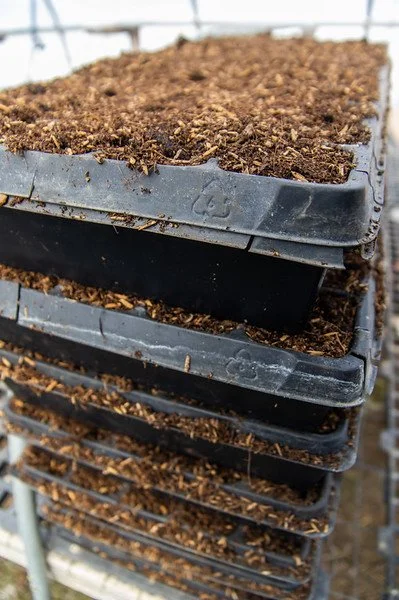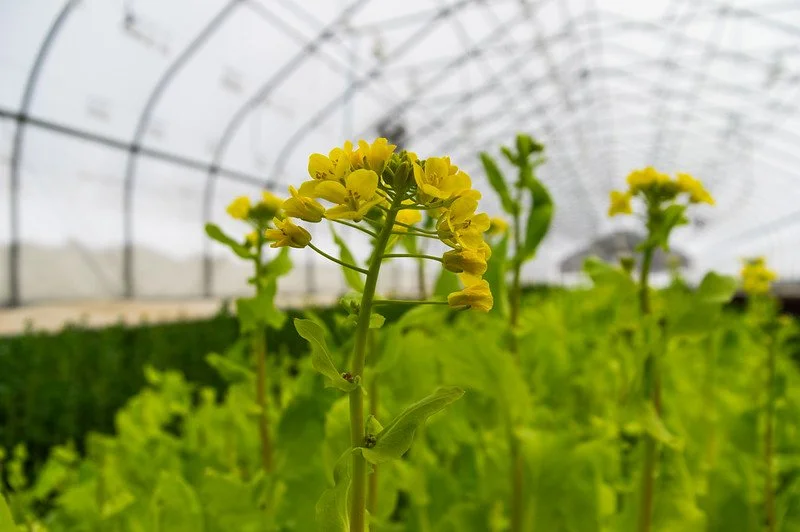3rd Week of the Spring CSA season: Week of March 20th
next month’s greens, photo by Adam Ford
CSA Balance Due
If you haven’t already paid, your balance is due this week. You can pay online through your account (with a card or e-check ACH payment), mail a check to Evening Song Farm 48 Nice Road, Cuttingsville VT 05738, leave a check or cash in the CSA cash box at the barn, send money with Venmo @eveningsongcsa, or use EBT. It’s very cool to pay in smaller chunks, just let us know what your payment plan is. Unless you email us with your payment plan, or set up a payment plan on the Farmigo dashboard, please pay for the entire season now. It saves us valuable farm work time to have payments at the beginning of the season or on a planned payment schedule. Thank you!
If you are able to pay with a check, e-check, cash, Venmo, or EBT, it saves us a considerable amount of money compared to card transactions. We know that it’s necessary for some folks to use a card, so don’t feel bad if you use that option. Thanks!
claytonia, photo by Adam Ford
baby kale, photo by Adam Ford
This Week’s Availability
This week we will have garlic, green cabbage, yellow potatoes, red potatoes, carrots, watermelon radishes, daikon radishes, Gilfeather turnip, rutabaga, claytonia, mesclun mix, green curly baby kale mix, spinach, and baby lettuce.
Ordering closes at noon on Tuesdays for Wednesday bags, and at midnight on Wednesdays for Friday bags.
green curly kale, photo by Adam Ford
lacinato needs a rest to regrow, photo by Adam Ford
Farm News
This past Saturday, right before the big snowfall, Ryan managed to seed our first outdoor field of the season. This field was seeded to a variety of fast-growing crops: baby lettuce, arugula, spinach, spicy and mesclun mix, bok choi, salad turnips, and radishes. We seed most of these crops weekly throughout the spring and early summer, and again in the late summer and fall. It was a real gift to be able to get seeds in the ground so early. The seeds will stay dormant in the cool temperatures under the snow, and as soon as the snow melts the soil temperature will begin warming underneath the row cover that is covering that field. Getting those seeds in early will allow them to begin growing faster than waiting for the field to sufficiently dry after this snow melts. Our early seeding dates are highly variable depending on snowfall. Last year it wasn't until early April that conditions allowed us to get our first seeding in. But the earlier we get our first outdoor seeding in the ground, the less nail biting we have during the spring CSA season as we watch the indoor greens wind down and get replaced by tomato, cucumber, and pepper transplants. These outdoor greens should mature at just the right time that the indoor production peters out.
The propagation house is filling with onion trays and pepper and tomato plants that we have potted up into bigger containers. Some of the earliest greens plantings in the tunnels have completely flowered, and we will remove those plants this week to make space for new plantings.
This week we had a great meeting with the policy director of NOFA-VT (Northeast Organic Farming Association) to discuss their future plans for organizing work around agricultural issues. NOFA-VT does an incredible amount of important and effective work in our state: on farm workshops and trainings, beginning farmer programs and training, technical assistance, mentorships, business planning, climate resilience planning, soil health cohorts, CSA-cost share programs, advocacy, organic policy work, farmer grants and awards, and an annual education conference. (If you are a big supporter of farms, eating, or the climate, and want to continue to support the transformation of our regional food system, consider becoming a NOFA member. They have memberships as low as $1/year. Personally, I think it’s an effective way to support Vermont’s agricultural landscape, and their newsletters help us see ourselves as part of a much bigger community working towards a beautiful vision for the future.)
One of the issues we discussed at our meeting is how to use organizing to address what I consider the impossible trifecta of farming: paying farmers a living wage while keeping food prices affordable for the community, all while taking care of the earth properly. (If you have read my newsletters over the years, you have probably read at least a dozen times how I believe balancing those 3 goals at the same time is difficult… that farm work continues to be lower paid work, while local food is a financial reach for many people, and the stresses and pinch-points of farm economics can make it difficult for farmers to invest time and money in practices that support the long-term vitality of soil and climate appropriate growing practices.) So it was exciting to get to chat about this reality with the policy director and hear how NOFA-VT is trying to develop its organizing apparatus to affect bigger change. As a farmer (and a parent) it feels like there is no time to do anything extra, but it really fills me up to stay connected and vocal within the bigger picture of farm work.
One of our milking goats, Noel, had her baby this week. It’s been awhile since we have bred one of our goats and had babies around. One of our milkers, Bella, has been a powerhouse of a milk producer, and has been milking through year after year for 6 years at this point. So we haven’t needed to breed her to keep enjoying our goat milk hobby. But I know how much joy it brings kids to have baby animals to take care of, so it felt like it was time to start having that hobby again for our kiddos. As I write this newsletter, they are both outside cuddling the new baby (after waking up while it was still dusky out on a Saturday morning and running outside), taking turns feeding her a milk bottle, and generally getting along for the longest stretch without fighting that I have ever seen these siblings get along for. Baby goat for the win!
Next week is more seeding and potting up early plants… it’s such a fun time of year to work on a farm.
Have a great week,
-ESF Team: Ryan, Kara, K2, Cindy, Galen, Katie, and Taylor (and Sky and Soraya)
Weekly Recipe
before the most recent snow storm, Ryan wanted to get a round of early spring seeding in the ground before the ground would be covered again for a bit, photo by Ryan
so he got mesclun mix, spinach, baby lettuce, arugula, bok choi, salad turnips, and radishes into the ground as the snow started flying, photo by Ryan
and then he pulled layers of row covers over those new seeds to give them early spring protection, photo by Ryan
greens seedings always in succession, photo by Adam Ford
tools out for repairs in the propagation house alongside seed packets, photo by Adam Ford
early beet seedlings, photo by Adam Ford
germination test of clover cover crop seed on our ash bark compost, photo by Adam Ford
Tokyo bekana gone to seed, photo by Adam Ford
Tat soi gone to seed, photo by Adam Ford
trays ready to be seeded, photo by Adam Ford
Sky petting Noel’s new baby, Sophie! photo by Ryan
it’s time to get the electric fence line back up around the bee hives for the spring, photo by Adam Ford
lunch break in the wash station, photo by Adam Ford
so many seeds to get started now that the propagation house is up and running! photo by Adam Ford
trays of future food, photo by Adam Ford
elderberry cuttings rooted in cells before they get potted up later, photo by Adam Ford
Tokyo bekana flower, photo by Adam Ford
Tat soi flower, photo by Adam Ford
last year’s morning glory, photo by Adam Ford
Sophie at about 8 hours old, photo by Jean

























